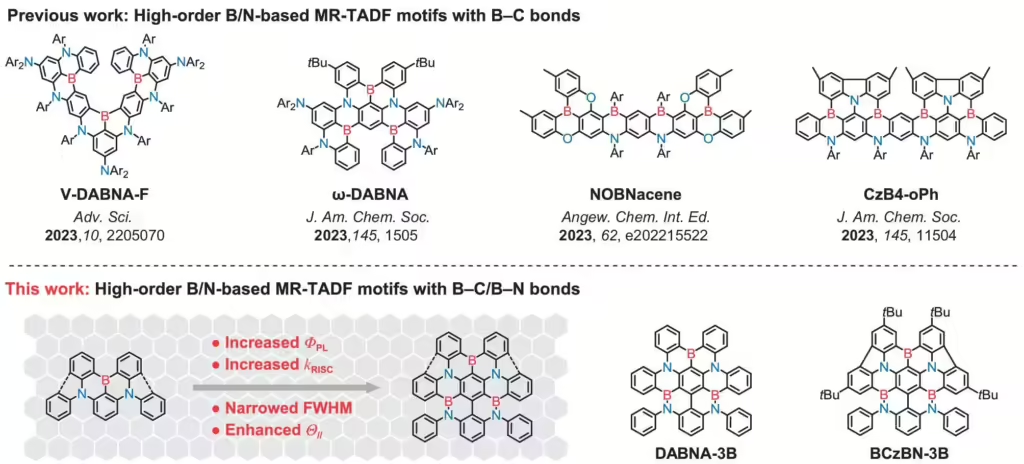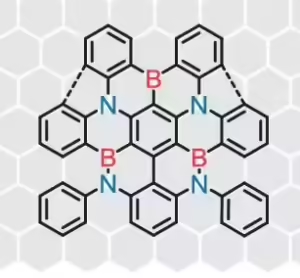Researchers at Shenzhen University have been focusing on improving a specific type of emitter known as multiple resonance thermally activated delayed fluorescence (MR-TADF) emitters. These emitters have long been celebrated for their ability to produce high color purity and efficiency, but they’ve also been plagued by problems like bulky molecular structures and complex synthesis, making them difficult to use in real-world devices.

To tackle these issues, the Shenzhen team proposed an innovative approach: using B–N covalent bonds to extend the molecular structure of MR-TADF emitters. By doing so, they were able to create a more rigid molecular framework, which helps to narrow the emission spectrum and improve performance in OLEDs. This new design enhances the movement of excitons—energy carriers in these materials—and boosts overall efficiency while reducing energy losses, especially at higher brightness levels.
So how did they do it? The researchers used a technique called post-functionalization, where they modified existing molecular frameworks by adding boron and nitrogen elements. This resulted in the creation of what they call high-order B/N-based motifs, which, in simple terms, are highly efficient and stable molecular structures. These new compounds were then rigorously tested, from their molecular composition to their performance in actual OLED devices. Using advanced spectroscopic methods and device fabrication, the team confirmed that the new materials not only performed better but were easier to produce.
The results are impressive: the new emitters delivered ultra-narrow emission spectra and improved quantum efficiency, a key measure of how well a material converts energy into light. The research team reports that these OLEDs achieved external quantum efficiencies (EQEs) of up to 42.6%, with significantly less efficiency drop-off, even at high brightness. This makes them some of the best-performing emitters ever reported for single-host OLED systems, according to the researchers.
Reference
Xingyu Huang, Jiahui Liu, Yulin Xu, Guohao Chen, Manli Huang, Mingxin Yu, Xialei Lv, Xiaojun Yin, Yang Zou, Jingsheng Miao, Xiaosong Cao, Chuluo Yang, B‒N covalent bond-involved π-extension of multiple resonance emitters enables high-performance narrowband electroluminescence, National Science Review, Volume 11, Issue 6, June 2024, nwae115, https://doi.org/10.1093/nsr/nwae115

